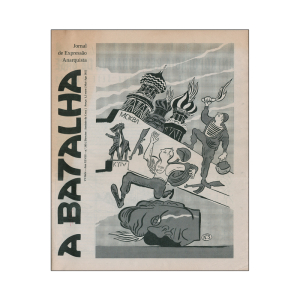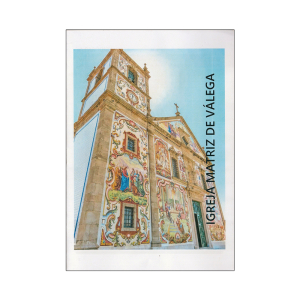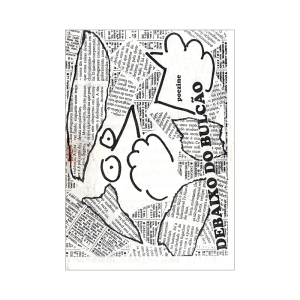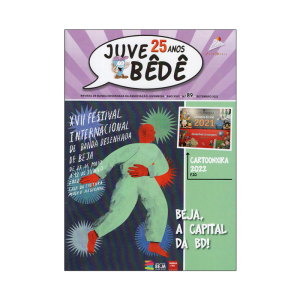Presentation
The FANZINETECA DE AVEIRO is a special physical section dedicated to “Fanzines”, magazines and alternative newspapers that exists within the library of the José Estêvão Secondary School in Aveiro. (The protocol for its implementation was signed on January 19, 2023)
Its main objective is to preserve these important documents of “underground” culture and expression, and to make the public aware of alternative content that is very relevant to the arts, in areas such as Comics, Music, Cinema, Photography, Design, Illustration, Writing, Poetry, Politics and Society.
This is Miguel Alexandre Simões Correia’s personal collection, which he has acquired over time and which is now available for consultation by the entire community for research purposes, investigation or mere interest in this type of publication.
It can be accessed physically (once the cataloging process has been completed) at the school library and during opening hours, and also digitally via this website and the online catalogs of: Rede de Bibliotecas da Região de Aveiro, Rede de Bibliotecas Municipais de Aveiro and Agrupamento de Escolas José Estêvão.
For the sake of differentiation and specialization, the initial collection contains only works published in Portugal. In the future, it could be extended to accommodate international works.
The activity of Fanzineteca de Aveiro does not end with making this collection of publications available; it goes further and aims to promote activities related to this kind of publishing, which is why it regularly organizes a series of events and actions linked to informal publishing, independent publishing and experimental design. These events take the form of exhibitions, seminars, workshops and/or training sessions.
In addition, Fanzineteca de Aveiro intends to take on the responsibility of creating a Portuguese Network of Fanzinetecas, to encourage a spirit of interaction between the various Portuguese fanzinetecas, either by exchanging copies of repeated fanzines, or by jointly creating events, exhibitions and/or workshops that can travel around Portugal.
Collection
Here you can browse the 1077 publications from the Aveiro Fanzineteca collection
JORNAL DA BD #5
NO NAME AMOR #6
DEBAIXO DO BULCÃO # Quarenta e três
ZUNDAP #11
A BATALHA# 295
MONDO BIZARRE #14
IGREJA MATRIZ DE VÁLEGA
MISTER, HERANÇA SEM TESTAMENTO
BLOGZINE DEFLAGRA - indice
MONDO BIZARRE #17
CENTRAL B #16
AN ZINE #7
DEBAIXO DO BULCÃO # Doze
MERGE - THE SOCIAL MAGAZINE #6
OUTSIDER # 18
SOCIEDADE DETURPADORA #1
LUA DE PRATA #1
MOLICEIRO # 1 22|23
DEBAIXO DO BULCÃO # Trinta e oito
JUVE BÊDÊ #89
PENTÂNGULO #01
What is a Fanzine?
The word FANZINE is a neologism that originated in the U.S.A. The term was born thanks to the combination of the word fan (or fan, in the Portuguese, with the positive sense of enthusiastic, passionate), with zine, the last syllable of magazine (equivalent to illustrated publication).
Consequently, the meaning of fanzine will be that of a magazine made by fans of a certain theme and aimed at fans of that same theme.
The first fanzines, or proto-magazines, appeared in the United States in the 1930s, edited by young adults, initially dedicated to science fiction, but soon afterwards the first dedicated to comics appeared in 1936.
Closer to home, in France, fanzines emerged in the 1960s, giving priority to critical and scholarly texts on comics, published by adults with a deep knowledge of the subject.
In Portugal, the first fanzine was Árgon, published by young people and featuring comics also made by young people, dated January 1972.
Fanzines deal with a variety of themes, sometimes covering several at the same time. My favorites are: comics, cartoons, illustration, science fiction, music (punk, pop, rock, heavy metal, etc.), cinema (especially gore), literature (prose and poetry), politics (with an emphasis on anarchism), esotericism, veganism, computer games, sports…
They usually have a markedly subversive or anti-system attitude.
The titles, as well as possibly defining the content , often show great imagination, anti-conventionalism and even some aggression towards society, characteristics that are often also highlighted, and even reinforced, by the respective graphics.
The originality of these publications, which are mostly alternative and experimental, has a lot to do with the visual presentation, and is also reflected in the format and number of pages: both are different from issue to issue, as is the title itself. Sometimes faneditors (editors of fanzines), either by distraction or deliberately, skip numbering and take long breaks in publication
There are several other very specific features of these amateur magazines, namely that they are not published for profit, their contributors are not paid, they have small print runs, they usually don’t have any periodicity and distribution is scarce, only by the editor himself, who puts them on sale at fanzine fairs, comic festivals and specialized bookshops.
When they have better graphic quality – by replacing photocopying with offset printing – they have ISBNs and are distributed more widely, they are called prozines.
This is a text by Geraldes Lino supplemented by artificial intelligence (Chat GPT) in September 2023
Classification
The works in the Aveiro Fanzineteca collection are catalogued in our internal system using criteria that are relevant to the identification and classification of this type of publication. This system is subject to improvement over time.
In addition to our in-house cataloging system, we rely on the precious collaboration of the Municipality of Aveiro, and specifically the team at the Aveiro Municipal Library located in the Atlas Building, with whom we have been cataloging in their Nyron system, which includes even more in-depth library criteria. With this important step, the collection of the Aveiro Fanzineteca can be searched through the Aveiro Municipal Library Network and, in turn, also through the Aveiro Region Library Network (CIRA), which means that the number of people with access to this information is very wide, corresponding to a territorial area that covers the entire Intermunicipal Community of the Aveiro Region.
The library of the José Estêvão Secondary School is also doing a remarkable job, thanks to the teachers and the rest of the team, in linking this series to the school’s search system, making it possible to find all the publications of the Aveiro Fanzineteca in the various schools of the José Estêvão School Group.





























